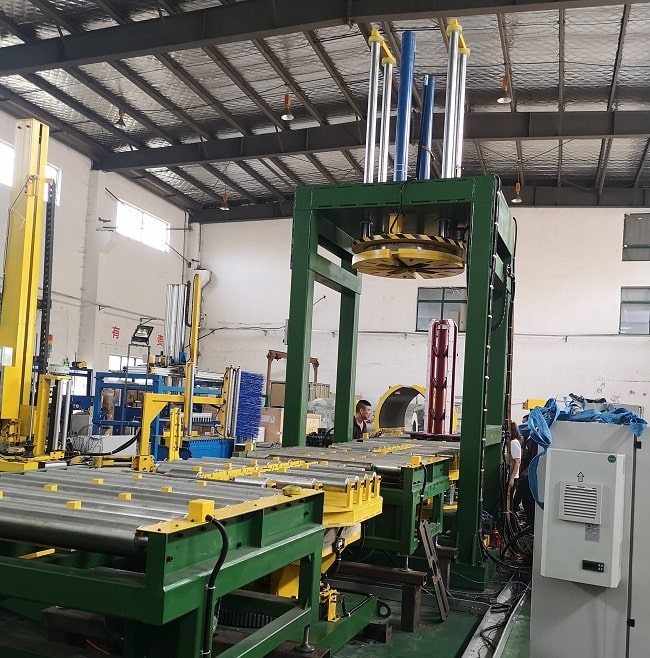Optimizing Wire Coil Handling: A Guide to Automatic Compacting and Strapping Machines
Handling large, heavy wire coils efficiently and safely is a significant challenge in many manufacturing and processing environments. Automatic wire coil compacting and strapping machines offer a robust solution, streamlining the packaging process, improving load stability, and saving valuable space.
1. The Process: How Automatic Compacting and Strapping Works
Understanding the operational sequence helps clarify the benefits of these automated systems:
- Coil Loading: The process typically begins with placing the wire coil, often contained within a basket or formed into a rosette, onto the machine's designated loading area or infeed conveyor. Proper positioning is crucial for the subsequent steps.
- Transfer to Compacting Station: The coil is automatically transferred to the compacting station.
- Compacting Cycle: Once the coil is correctly positioned, the compactor mechanism activates. A press descends, applying controlled vertical force onto the coil. This pressure reduces the coil's overall height to a predetermined dimension, making it denser and more stable. The machine ensures the force is applied evenly, usually centered on the coil's axis.
- Strapping Application: With the coil held in its compacted state, the strapping sequence begins. Most machines feature integrated channels or guides that allow strapping material (typically PET or steel straps) to be fed easily around the coil circumference and through its inner diameter (ID). The machine automatically tensions, seals (e.g., via heat welding or mechanical crimping), and cuts the straps. Commonly, 3 or 4 radial straps are applied at equidistant points to ensure the coil maintains its compacted form.
- Press Release and Coil Discharge: After strapping is complete, the compacting press retracts, and the machine returns to its starting position. The now securely compacted and strapped wire coil is then discharged from the machine, often onto an exit conveyor, ready for storage, wrapping, or shipping.

steel wire coil compacting and strapping machine 2. Key Considerations for Compacting and Strapping Systems
When evaluating these machines, consider the following aspects:
- Coil Specifications: Ensure the machine can handle your specific range of coil diameters (ID/OD), weights, widths, and wire types.
- Compacting Force: The required force depends on the wire type and desired compaction level. The machine should offer adjustable and controllable pressure.
- Strapping Requirements: Determine the number of straps needed, the type of strap material (PET/Steel), and the required tension for secure unitization.
- Throughput Needs: Match the machine's cycle time with your production line's output requirements.
- Automation Level: Systems range from semi-automatic (requiring some operator intervention) to fully automatic, integrated lines.
- Safety Features: Look for essential safety components like physical guards, light curtains, emergency stops, and interlock systems.
- Integration: Consider how the machine will fit into your existing workflow, including connections to upstream payoff equipment and downstream packaging or handling systems.
3. Benefits of Automation in Wire Coil Packaging
Implementing an automatic compacting and strapping machine yields significant advantages:
- Enhanced Safety: Reduces manual handling of heavy and potentially unstable coils, minimizing risks to operators.
- Increased Efficiency: Automates repetitive tasks, significantly speeding up the packaging process compared to manual methods.
- Improved Load Stability: Compacting and securely strapping coils prevents them from loosening or collapsing during handling and transport.
- Space Optimization: Reduced coil height saves valuable storage and shipping space.
- Consistent Package Quality: Ensures every coil is compacted and strapped uniformly according to set parameters.
- Reduced Labor Costs: Frees up personnel for other value-added tasks.
By automating the compacting and strapping process, manufacturers can achieve more consistent, efficient, and safer handling of wire coils.
For those interested in exploring broader automated solutions, information on comprehensive wire coil packing lines can provide further context on integrated systems.